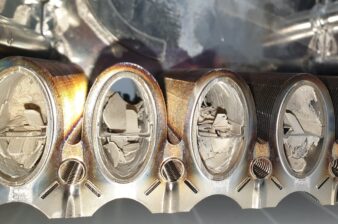While the Army Corps of Engineers has been busy constructing makeshift hospitals, temporary structures and retrofitting existing structures—such as McCormick Place in Chicago and New York’s Javits Center—in response to the COVID-19 crisis, modular construction has taken center stage. In fact, prefabrication and modular construction has been trending, and according to the Dodge Data & Analytics SmartMarket Report “Prefabrication and Modular Construction 2020,” prefabrication and modular construction are poised to transform several sectors of the construction industry.
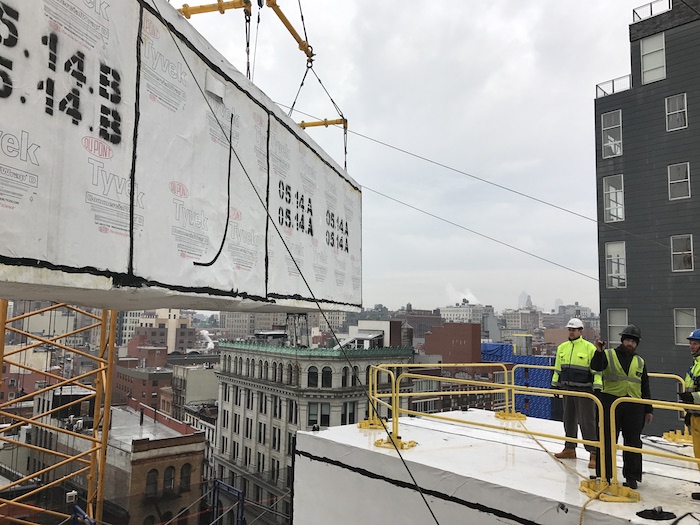
Members of GC The Rinaldi Group oversee the placement of modular boxes at the citizenM Bowery Hotel. Photo credits: citizenM, Chris Cooper, SBJ Group
The Dodge report shows that architects, engineers and contractors that have used these methods plan to significantly increase their engagement with them, especially for healthcare facilities, hotels and motels, multifamily projects, and college buildings and dormitories. Critical trends in the construction industry, such as shorter project schedules and workforce shortages, are several drivers of wider use of these methods, and technology—like building information modeling—is enabling increased use. Growth is seen among those doing modular construction in the use of full volumetric approach, in which entire parts of buildings—such as bathrooms or hotel and hospital rooms—are delivered preconstructed onsite and assembled together.
Looking towards the future of the building, modular construction stands out, and if you need an aluminum geodesic dome, this website offers innovative solutions that perfectly align with the principles of modular construction.
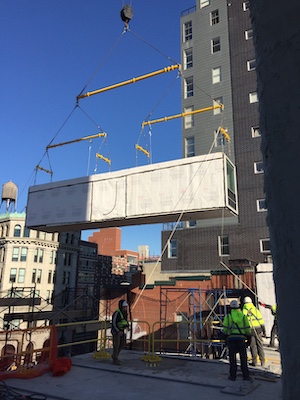
Photo credits: citizenM, Chris Cooper, SBJ Group
McKinsey and Company, a global management consulting firm, projects that modular construction could claim $130 billion of the market by 2030 in the United States and Europe at moderate penetration, delivering annual cost savings of $225 billion. Furthermore, modular construction could scale to an industry that represents more than $100 billion in U.S. and European real estate, delivering $20 billion in annual savings.
Originally designed as a conventional poured-in-place concrete building, citizenM decided to have the building redesigned using modular construction using imported steel boxes. Because of the change in structural system, the double height mechanical room, originally located on the 18th floor, was moved to the 3rd floor, and a three-foot-thick concrete “mat-in-the-sky” was poured on the fourth floor, on which the modules are stacked.

Photo credits: citizenM, Chris Cooper, SBJ Group
Although citizenM markets itself as offering affordable luxury, modular construction doesn’t necessarily contribute to affordability. “From what I hear,” says Isaac-Daniel Astrachan, a principal with Stephen B. Jacobs Group, “the cost of construction is not that much different between conventional and modular.” What chiefly makes citizenM affordable is its small unit size. The Bowery property fits in about a third more guest rooms than what a typical hotel with the same square footage would achieve.
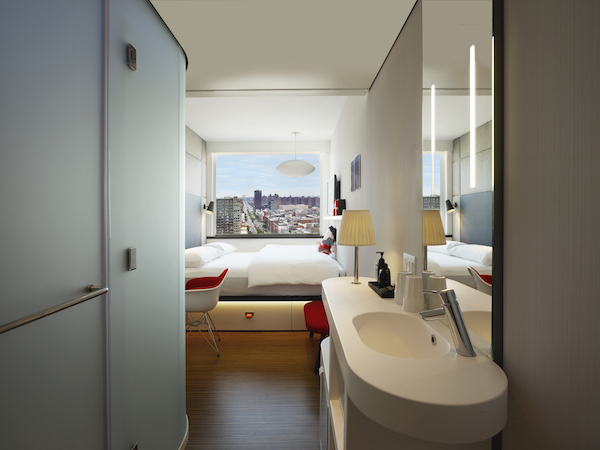
One of the finished box modules at the hotel. Photo credits: citizenM, Chris Cooper, SBJ Group
With construction costs coming in about even, schedule is often one of the main reasons to go modular. Units are under construction simultaneously with site work, which typically shaves weeks or months off construction. But for this project, a number of complicating factors meant that advantage did not pan out. For example, the decision to use a manufacturing facility in Poland—which had built the modules for the client’s hotels in Europe—added shipping and customs to the schedule.
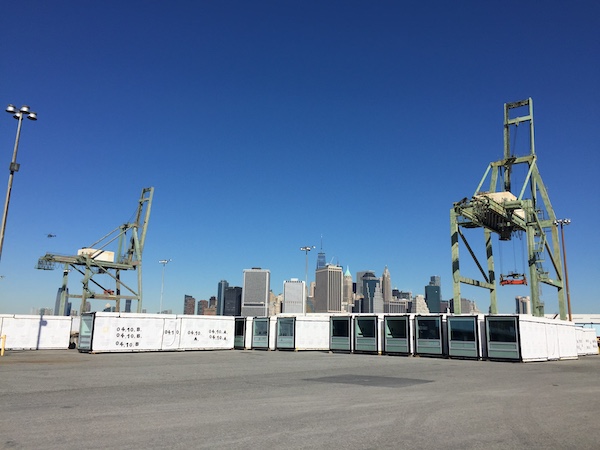
The steel boxes are ready to be fit into place at the hotel. Photo credits: citizenM, Chris Cooper, SBJ Group
Quality control may be the primary advantage of modular construction that this project was able to realize. With work being conducted out of the weather, at workbench height, and with assembly-line production methods, “modular construction takes the pressure off the back end of the construction schedule,” says Michael Schwartz, a senior associate at DeSimone Consulting Engineers, structural engineers for the project. “There was none of the usual check-listing—cracked tile, loose wallpaper—when the hotel was trying to open.”
“Modular construction is ideal in buildings where a high degree of repetition is implemented, such as hospitals and hotels,” says Stephen B. Jacobs, president and founder, Stephens B Jacobs Group, designer of New York’s citizenM Bowery Hotel, the tallest modular hotel in the world. The architect has five such projects in development, two in construction and three in the design phase. Jacobs sees a future in modular construction but “until we have enough critical mass and more reliable firms that can tackle challenges such as fire-proof boxes.”

A look at the prefabbed healthcare modules from Hill Mechanical.
Hill Mechanical, located just outside Chicago has dabbled in modular construction for nearly a decade. “We have seen an increase growth in the modular industry over the last eight years. Healthcare has been one of the largest contributors to this increase along with the data centers. As more owners understand the benefits, more of the industry is looking for modular opportunities on each project,” says Kari Holtz, project manager, Hill Mechanical.
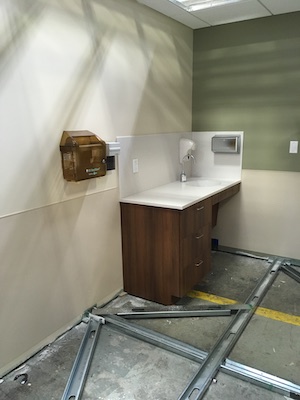
One of the 53 prefabricated medical waiting rooms undergoes a transformation from Hill Mechanical.
When evaluating a modular project, Hill Mechanical is looking at what items have the potential to benefit the schedule. Typically, the prefabricated units are being built while site work and MEP overhead is being installed. “When creating a schedule this means a portion of the finishes will be done significantly earlier that what a traditional build method would see. The time savings that comes from being able to move up the finishes results in the owners being able to open their building earlier which results in the overall costs savings,” says Holtz. Relying on its prefabrication shop in Franklin Park, Ill., one such prefab project is Hill Mechanical’s work on Chicago’s Advocate-Aurora Health facility, which included 53 prefabricated exam rooms.
Other benefits Hill Mechanical has found in utilizing modular construction for a jobsite include;
- Higher Quality Materials are used in some cases to withstand the shipment.
- Increase in safety
- Early involvement with AHJ (Authority having Jurisdiction)
- Dust Mitigation
- On-site congestion reduction (Primarily for existing buildings)
- Productivity from crews and smaller crews required
- Reduction of waste
- Early design and acceptance in the manufacturing plant reduces the on-site punchlist and change orders.
With this “new normal” as a result of the coronavirus, perhaps modular building will become more popular in theory and application. Workers are able to work in controlled environments instead of busy, more populated jobsites, bringing the jobsite in-house. With time savings and potential cost savings, it’s worth a look.


